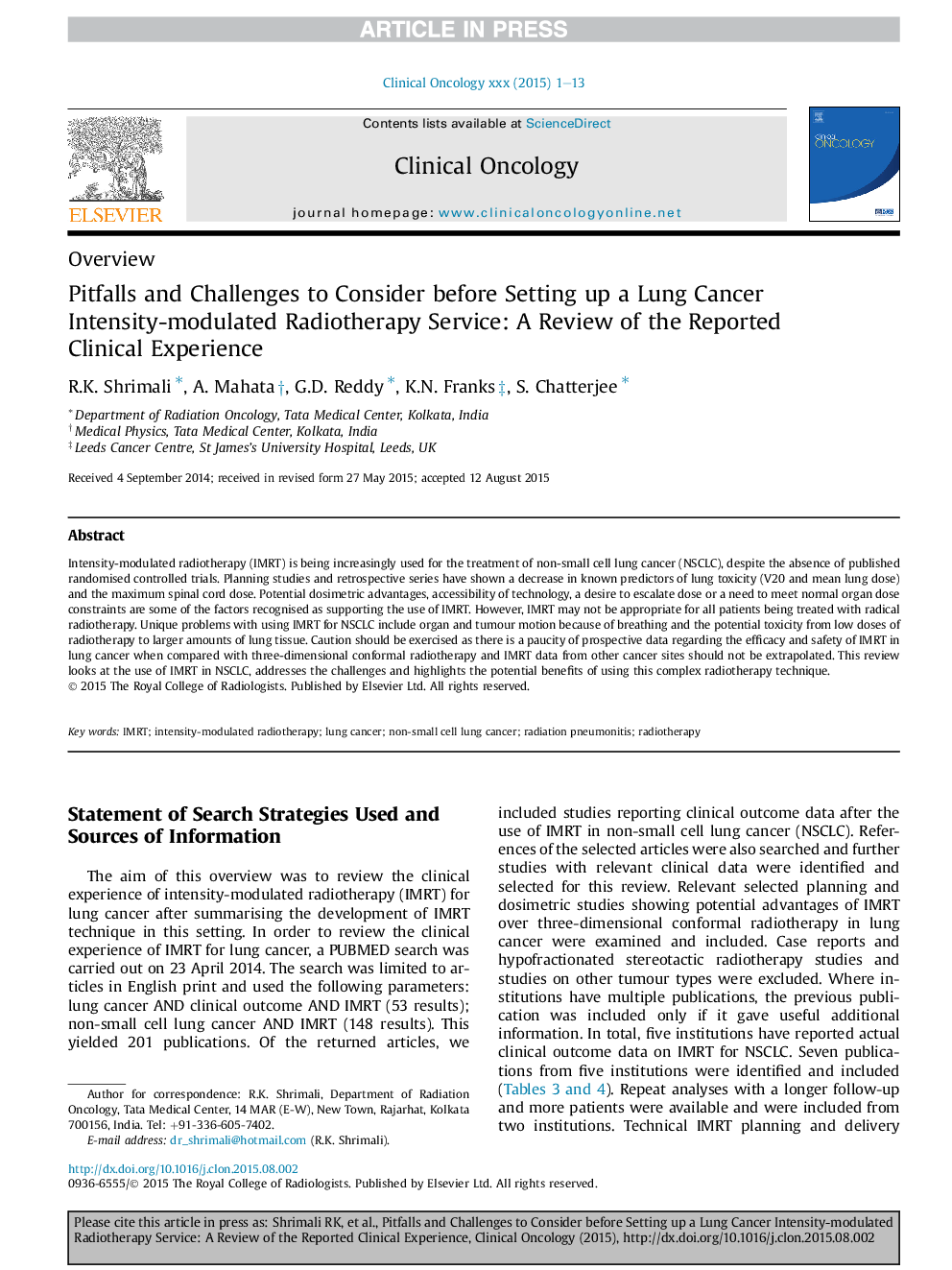| Article ID | Journal | Published Year | Pages | File Type |
|---|---|---|---|---|
| 5698300 | Clinical Oncology | 2016 | 13 Pages |
Abstract
Intensity-modulated radiotherapy (IMRT) is being increasingly used for the treatment of non-small cell lung cancer (NSCLC), despite the absence of published randomised controlled trials. Planning studies and retrospective series have shown a decrease in known predictors of lung toxicity (V20 and mean lung dose) and the maximum spinal cord dose. Potential dosimetric advantages, accessibility of technology, a desire to escalate dose or a need to meet normal organ dose constraints are some of the factors recognised as supporting the use of IMRT. However, IMRT may not be appropriate for all patients being treated with radical radiotherapy. Unique problems with using IMRT for NSCLC include organ and tumour motion because of breathing and the potential toxicity from low doses of radiotherapy to larger amounts of lung tissue. Caution should be exercised as there is a paucity of prospective data regarding the efficacy and safety of IMRT in lung cancer when compared with three-dimensional conformal radiotherapy and IMRT data from other cancer sites should not be extrapolated. This review looks at the use of IMRT in NSCLC, addresses the challenges and highlights the potential benefits of using this complex radiotherapy technique.
Keywords
Related Topics
Health Sciences
Medicine and Dentistry
Oncology
Authors
R.K. Shrimali, A. Mahata, G.D. Reddy, K.N. Franks, S. Chatterjee,
